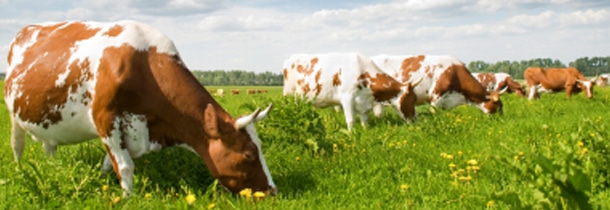
16 Jul The Meat and Potatoes of Eating Meat
Red meat, chicken, pork and animal products in general have had a bad wrap over the past 40 years via nutritional experts and government health promotion. Consumption of animal products such as meat and dairy has been linked to giving us cancer and heart disease; our two biggest killers here in Australia. Why though? When human beings have been consuming animal products for millennia and archaeological records suggest that humans did not suffer as we do today. Could it be that the animals that we eat today bear little resemblance to the healthier animals of the past?
You may have heard of terms like “grass fed”, “pasture raised”, and “wild” being thrown about health circles when talking about meat products. What they refer to is the way the animal was raised and what they consumed in their lifetime before being consumed by us. So for instance grass fed refers to ruminant animals (cows, goats, sheep etc) that naturally feed on grass as their main source of food. Pastured or pasture Raised refers to an animal that grazes on a more varied diet of roots, bugs, grasses, other plants and seeds, these are pigs and chickens. Wild refers to any animal in its natural habitat that is not farmed. These animals eat whatever comes naturally to them, a good example is fish or kangaroo.
Who cares what the animal eats before it becomes food; isn’t it all the same? Couldn’t be further from the truth. When we analyse animals raised on their natural foods in a healthy environment they demonstrate big differences in their nutritional value. You should remember that when we eat an animal we eat what they have eaten so if they’ve eaten chemical laden feed high in inflammatory compounds we laden our own bodies with the same. One huge difference in the composition of animal products of grain/legume fed conventionally farmed compared to grass fed/pastured or wild is the fat composition. Grain/legume fed conventional animal products have skewed ratios between omega 6 to omega 3 whereby omega 6 is extremely high. In a grass fed cow for example they are balanced, providing an anti-inflammatory effect rather than a inflammatory one in grain fed conventionally farmed cows.
When we look at the health of an animal while being raised on a farm, conventional farming practices produce unhealthy animals that need to be medicated to survive and grow enough to be sold as food. So what happens is they are given unnecessary amounts of antibiotics and other drugs which form residues in the animal food product, that inevitably get passed on to the consumer of the food. Healthy animals eating the foods they are designed to eat don’t need as many medications because they’re not sick. So to avoid chemicals in animal foods without having to pay for organic use pastured/grass fed or wild animal products.
There are many more reasons to eat these animal products over conventionally farmed animal products but it comes down to this; if you want to be healthier better you, you need to consume healthy animals if you eat animal products. Considering this information, think about how it could of skewed the information in many studies linking meat intake to disease. Could the animals be diseased themselves and they just passed it on to us?
Any further information on this topic awaits the next instalment, or book in for a nutritional consult to learn more about your food intake.
